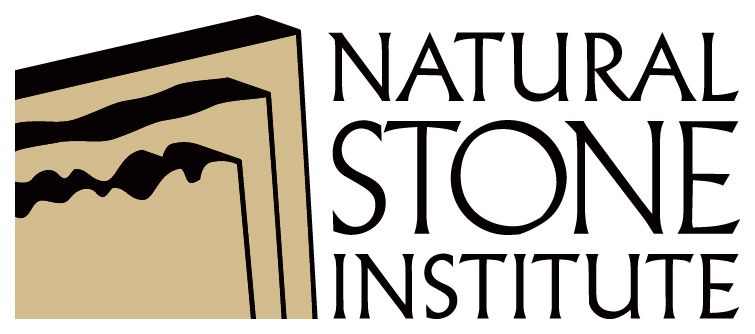The Safe Shop From The Natural Stone Institute
Power-tool Protection
Don't Give a Thought to Everyday Use? Think Again.
The Power tools -- portable and fixed installation -- are a common part of our everyday workplace lives. These tools help us to easily perform tasks that otherwise would be difficult or impossible. However, these simple tools can be hazardous and have the potential for causing severe injuries when used or maintained improperly.
Hazards
Potential for punctures, cuts, amputations and crushing injuries.
- In-running nip points (e.g., belts, gears, pulleys, sprockets).
- Rotating parts (e.g., belts, gears, shafts, pulleys, sprockets, spindles, drums, flywheels, chains, rotating cutting/drilling tools)
- Reciprocating parts (e.g., jig saw, recip saw, power presses)
Potential for eye injuries.
- Flying chips and sparks.
Electrocution when using electrically powered tools.
Potential for fires.
Power Tool Safety Guidelines
- Operate power tools in accordance with the manufacturer’s operating instructions.
- Use power tools only for their designed/engineered purpose. Ensure all guards are in-place prior to operation.
- Follow any employer specific power tool operating instructions or requirements.
- Wear personal protective equipment (PPE) prescribed by the power-tool manufacturer or by the employer, including safety glasses with side-shields.
- Do not wear loose clothing or jewelry that may become an entanglement hazard. Long hair should be tied back to prevent getting caught in the tool.
- Inspect power tools prior to each use. Do not use defective power tools.
- A power tool’s energy source must be removed prior to making tool changes.
- Ensure adequate lighting is present.
- Power tools should be equipped with a readily accessible emergency stop button (E-stop).
- Know the location of power-tool shutoffs, e.g. breakers, E-stops.
From the OSHA Files
On the date of the incident, Employee #1 was using a pneumatic water/air polisher on a piece of granite. The flexible diamond disc he was using fractured, and a piece of the disc struck his left eye. Employee #1 was hospitalized for treatment; later surgery involved removing the eye.
OSHA Inspection Results
OSHA issued citations for several serious violations of OSHA standards including:
The employer did not ensure that each affected employee used appropriate eye or face protection when exposed to eye or face hazards from flying particles in accordance with 29 Code of Federal Regulations (CFR) 1910.133(a)(1).
The employer did not ensure the safe condition of tools and equipment used by employees, including tools and equipment which may be furnished by employees (1910.242(a).
OSHA Recommendations for Accident Prevention
• Train all personnel to recognize potential problems and hazards when working with hand tools, air pressure and bracing procedures.
This case is representative of injuries caused by improper work practices. No special emphasis or priority is implied nor is the case necessarily a recent occurrence. The legal aspects of the incident have been resolved, and the case is now closed.
Specific Power Tools Safety Requirements:
Drill Press - E-stop; spring loaded chuck key, chuck guard.
Horizontal Lathe - E-stop, spring loaded chuck key, tool guard, chuck guard.
Bridgeport Lathe - E-stop, spring loaded chuck key, chip guard.
Horizontal Boring Machine - E-stop, spring loaded chuck key, chip guard.
Bench Grinder - E-stop, chip guard, tool rest (1/8” max. from wheel), tong guard (1/4” max. from the wheel).
Table Saw - E-stop, blade guard, work piece push stick.
Band Saw - E-stop, top and bottom blade pulley guards, adjustable blade guard.
Portable Circular Saw - Fixed top blade guard; retractable bottom blade guard.
Angle Grinder - Wheel guard (covering 1/2 the top of the wheel); second-hand handle.
Radial Arm and Chop Saws - E-stop, fixed top blade guard and retractable bottom blade guard.
Pneumatic Tools
There are several hazards associated with the use of pneumatic tools. First and foremost is the danger of getting hit by one of the tool’s attachments or by a fastener the worker is using with the tool.
Pneumatic tools must be checked to see that the tools are fastened securely to the air hose to prevent disconnection. A short wire or positive locking device attaching the air hose to the tool should be used.
Eye protection is required, and head-and-face protection is recommended for employees working with pneumatic tools.
If an air hose is more than ½” (12.7 mm) in diameter, a safety excess flow valve must be installed at the source of the air supply to reduce pressure in case of hose failure.
In general, the same precautions should be taken with an air hose that are recommended for electric cords. The hose is subject to the same kind of damage, and can present tripping hazards.
When using pneumatic tools, a safety clip or retainer must be installed to prevent attachments such as chisels on a chipping hammer from being ejected during tool operation.
Screens must also be set up to protect nearby workers from being struck by flying fragments around chippers, riveting guns, staplers or air drills.
Compressed-air guns should never be pointed toward anyone. Workers should never “dead-end” them against themselves or anyone else. A chip guard must be used when compressed air is used for cleaning.
Noise is another hazard associated with pneumatic tools. Working with noisy tools requires proper, effective use of appropriate hearing protection.
Reminder: Safety is the responsibility of both management and employees!
The information herein is provided by the Natural Stone Institute as a general summary for use in job site toolbox talks and is provided to augment and not substitute for or replace required training under any applicable local, state or federal workplace statute, law or regulation. It is the user’s responsibility to ensure this content is consistent with job site requirements and applicable statutes, laws or regulations prior to use and make any required additions or changes.
